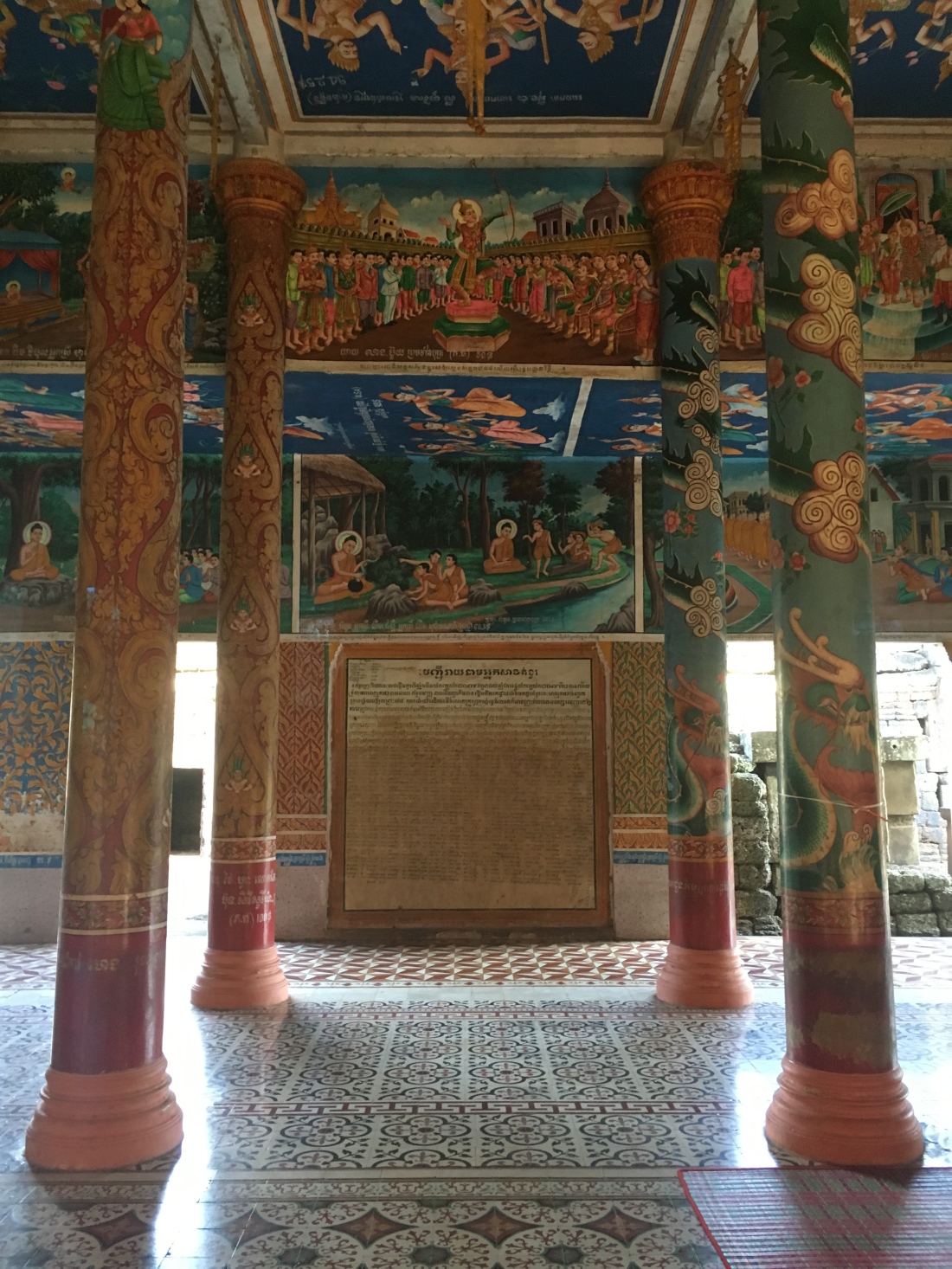 I recently returned from Cambodia where I spent two weeks traveling through the country learning, reflecting and enjoying my surroundings. My group consisted of eleven high school students and four leaders. Never have I felt bonded to so many people in such a short amount of time. Our collection of memories and experiences ranges from eating tarantulas to breakdancing at an NGO to visiting the Khmer Rouge Killing Fields. Those two weeks were quite impactful—on my mind and soul. A reoccurring, yet always different, activity in the itinerary was visiting Buddhist temples. Ninety-five percent of Cambodia identifies as Buddhist, and the religion prevails throughout the country. I am personally a practicing Catholic, yet I am receptive to other religions. I believe each person we meet is someone we can learn from, teach, and love. When I entered Cambodia, my perception of Buddhism consisted of short facts such as the following: Buddhists believe in rebirth. They meditate. Many men become Monks, et cetera. I had a simple understanding of it that wasn’t wrong, but it was one-dimensional, and I have yet to learn about a religion that is actually one-dimensional. Having returned from Cambodia, though I still don’t know nor understand a large portion of Buddhist beliefs, I can say I have engaged in a Buddhist culture and its traditions. I believe there are many aspects from Buddhism-manifested culture we, especially believers in God, can learn and benefit from in our daily lives. I have chosen three practices to elaborate upon:
I recently returned from Cambodia where I spent two weeks traveling through the country learning, reflecting and enjoying my surroundings. My group consisted of eleven high school students and four leaders. Never have I felt bonded to so many people in such a short amount of time. Our collection of memories and experiences ranges from eating tarantulas to breakdancing at an NGO to visiting the Khmer Rouge Killing Fields. Those two weeks were quite impactful—on my mind and soul. A reoccurring, yet always different, activity in the itinerary was visiting Buddhist temples. Ninety-five percent of Cambodia identifies as Buddhist, and the religion prevails throughout the country. I am personally a practicing Catholic, yet I am receptive to other religions. I believe each person we meet is someone we can learn from, teach, and love. When I entered Cambodia, my perception of Buddhism consisted of short facts such as the following: Buddhists believe in rebirth. They meditate. Many men become Monks, et cetera. I had a simple understanding of it that wasn’t wrong, but it was one-dimensional, and I have yet to learn about a religion that is actually one-dimensional. Having returned from Cambodia, though I still don’t know nor understand a large portion of Buddhist beliefs, I can say I have engaged in a Buddhist culture and its traditions. I believe there are many aspects from Buddhism-manifested culture we, especially believers in God, can learn and benefit from in our daily lives. I have chosen three practices to elaborate upon:
- Buddha’s face and figurine is everywhere. Everywhere I looked, out the van window, around the market, in the village, I saw Buddha. I was constantly reminded of Buddha, and the symbol is there to serve that exact purpose. What if everywhere we looked we saw the cross or another reminder of our Father? Or simply, what if we grew to truly believe each place we saw and person we met was beautifully created for a purpose?
- Flip-flops are an ideal shoe choice for a reason. We were always taking our shoes off and putting them back on again. Before going to Cambodia, I knew it was common practice to remove one’s shoes before entering a temple. When one walks onto Holy Ground, it makes sense to show respect to the higher power they are praising. I am a supporter of the non-existent movement to remove our shoes before going into church. In Cambodia, I soon learned that it is also socially correct to remove one’s shoes before entering your own or someone else’s home. It is a way to show respect to oneself and one’s neighbor. This practice is one of the many examples of the sense of respect for everyone that permeates Cambodia.
- Innnn and Outtttt. Each breath elongated. Our bodies are powered by the air around us. This is a beautiful yet incomprehensible concept we often forget. Meditation is at the heart of Buddhism. Each breath is vital to our bodies but also our souls. Prayer is essential to Christianity, but for me, I often find myself racing through a prayer rather than savoring and contemplating each phrase. Just breathing and being present with God is a form of growth. Meditation teaches the body and the soul discipline.